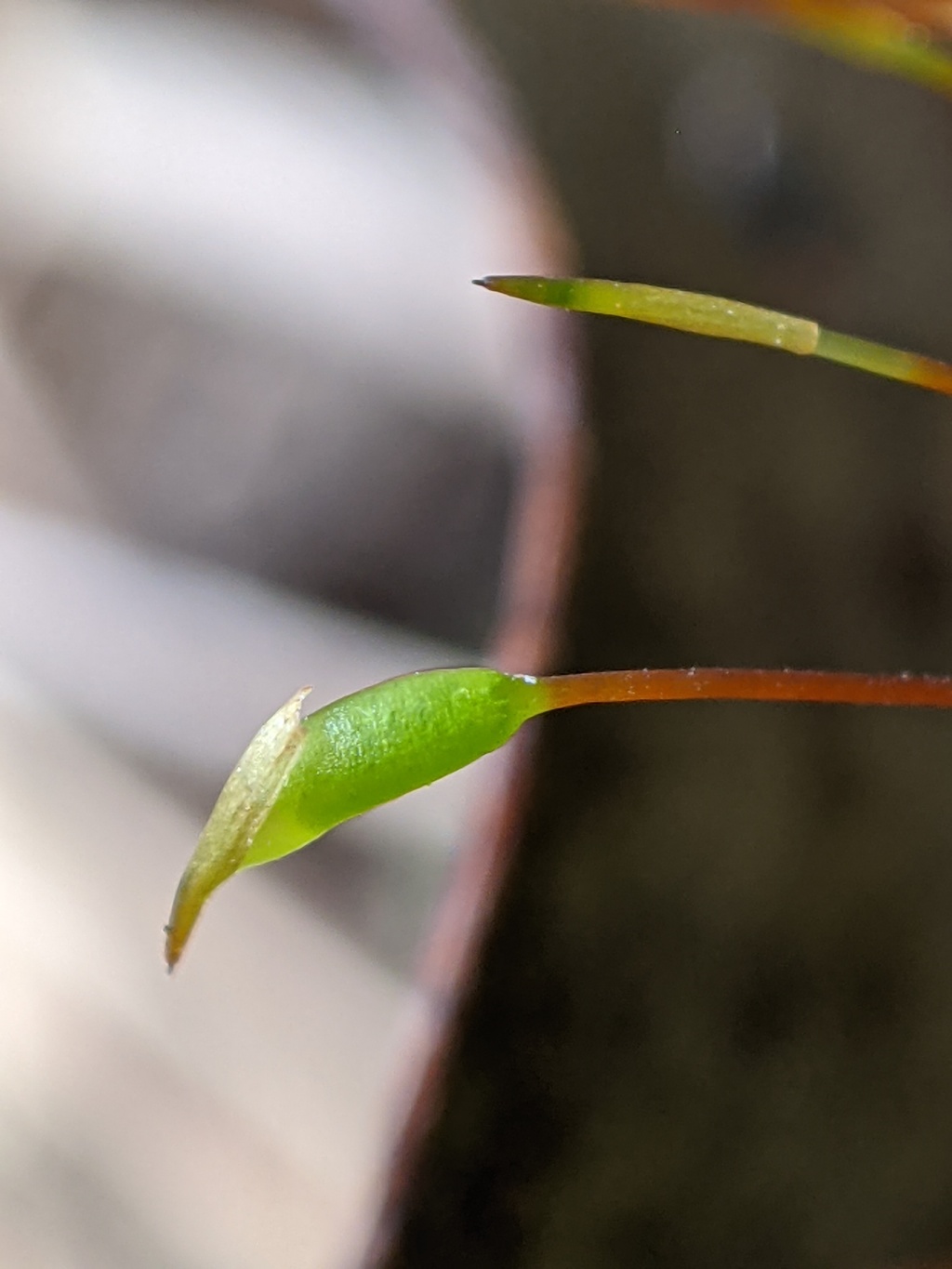Rhynchostegium
Autoicous. Asexual propagules absent. Mats or tufts on soil, rocks, logs or trees, often aquatic. Stems creeping, irregularly to slightly bipinnately branched, with fascicles of rhizoids ventrally; paraphyllia absent; central strand present or absent (not in Victoria). Stem and branch leaves similar, sometimes branch leaves smaller and sometimes narrower, orbicular (not in Victoria) or broadly ovate to ovate-lanceolate or ovate-oblong, erect-spreading to wide-spreading or squarrose from erect base when moist, arranged around stem and facing all directions, slightly homomallous or complanate, especially in branches, often twisted around mid-leaf, imbricate or not, slightly plicate or not, not or weakly decurrent; apex acute or acuminate, rarely obtuse (not in Victoria) or apiculate (not in Victoria); costa usually single, extending 35–85% leaf length, ending in a spine or not, or rarely short and double (not in Victoria); margin serrulate or serrate, plane or recurved near base; laminal cells linear or linear-rhombic, smooth, unistratose or rarely bistratose (not in Victoria); alar cells not differentiated or differentiated, slightly enlarged and rectangular to quadrate. Seta smooth. Capsule inclined to horizontal or rarely erect (not in Victoria), curved, urceolate or obloid to cylindric, with an annulus. Calyptra cucullate, smooth, glabrous. Operculum rostrate. Peristome double; endostome segments nearly height of exostome, with a high or low (not in Victoria) basal membrane; cilia present or absent (not in Victoria).
Widespread throughout temperate to tropical and boreal regions, with around 45 species; three species in Victoria.
 Spinning
Spinning



